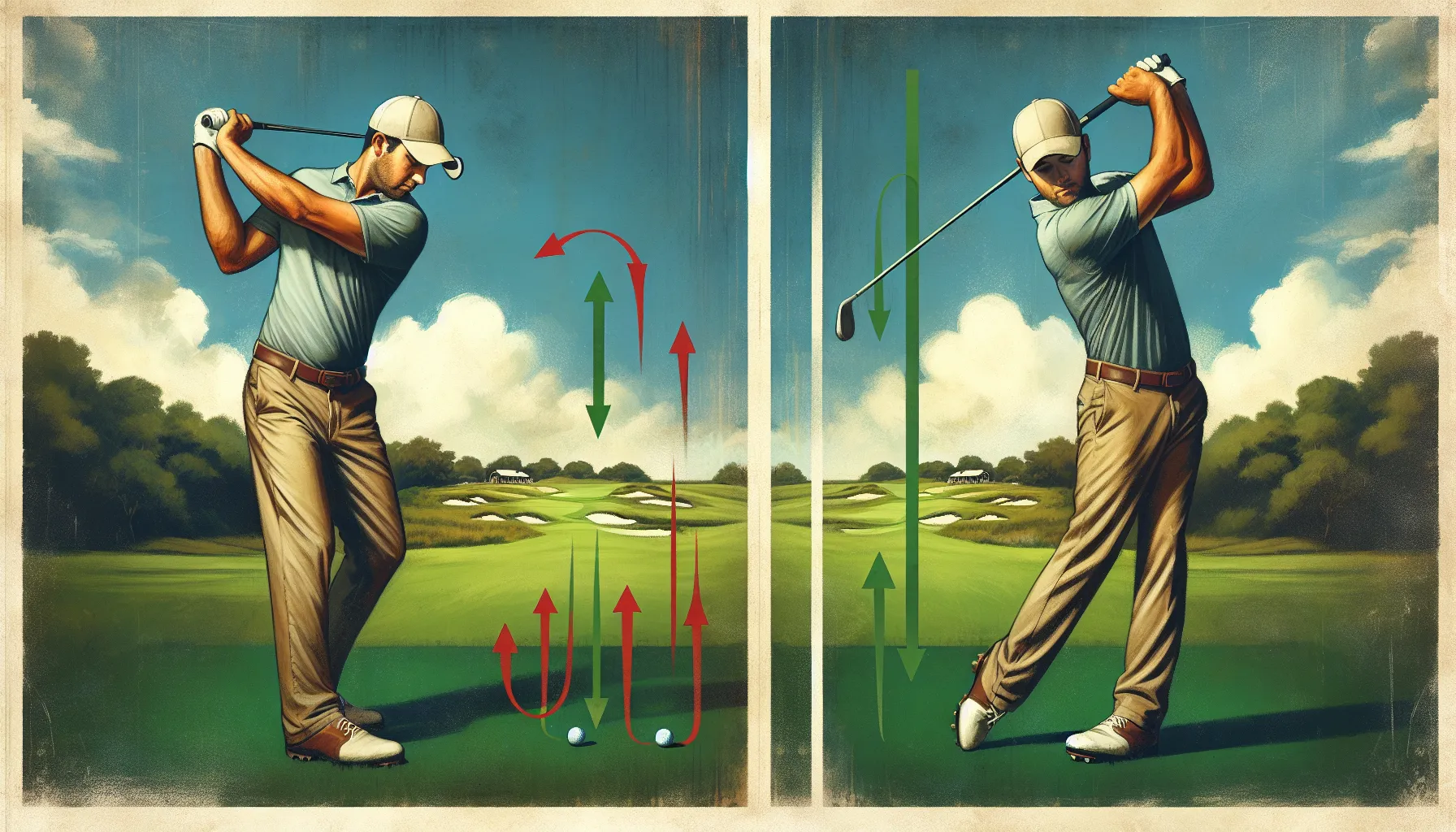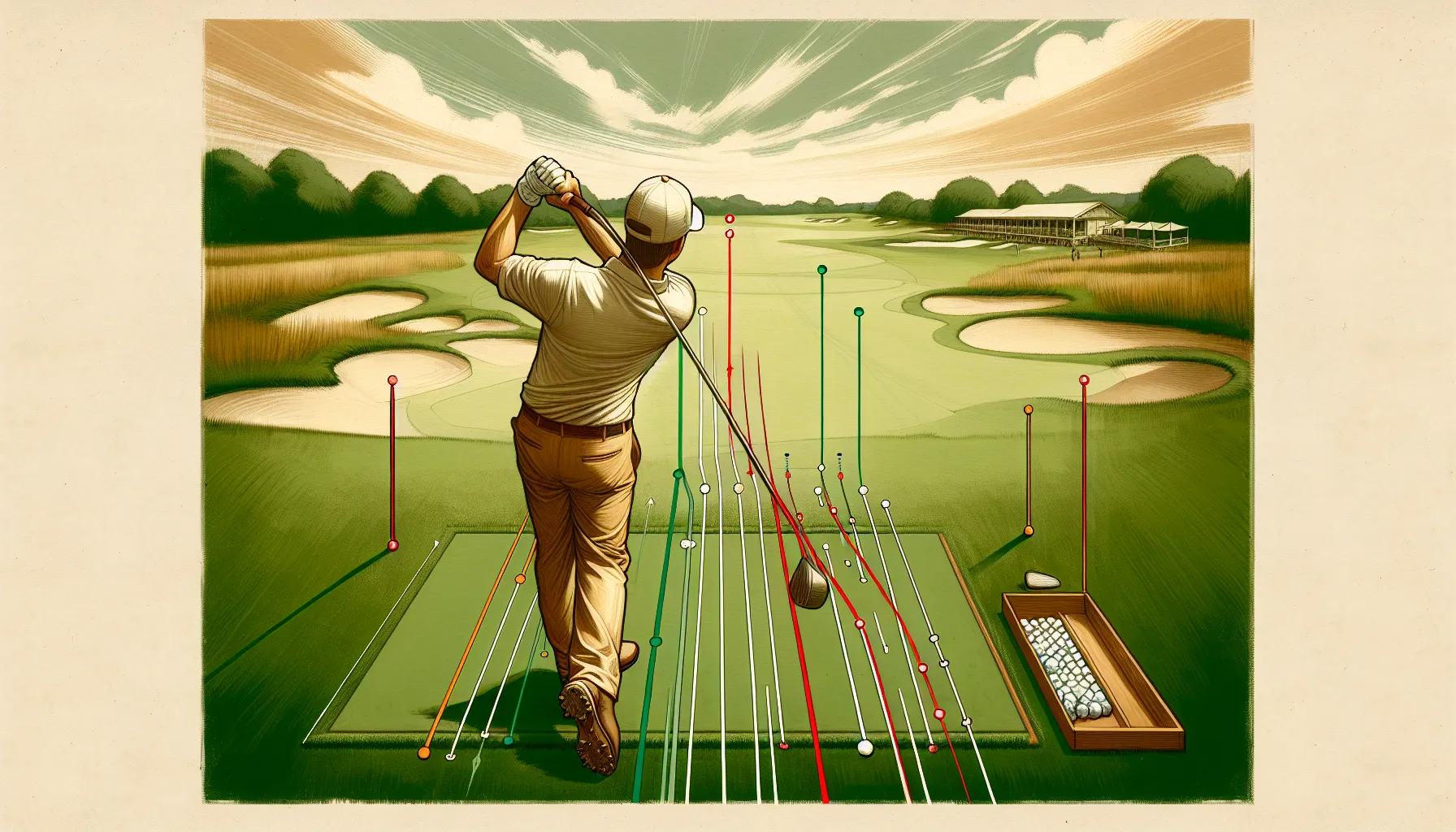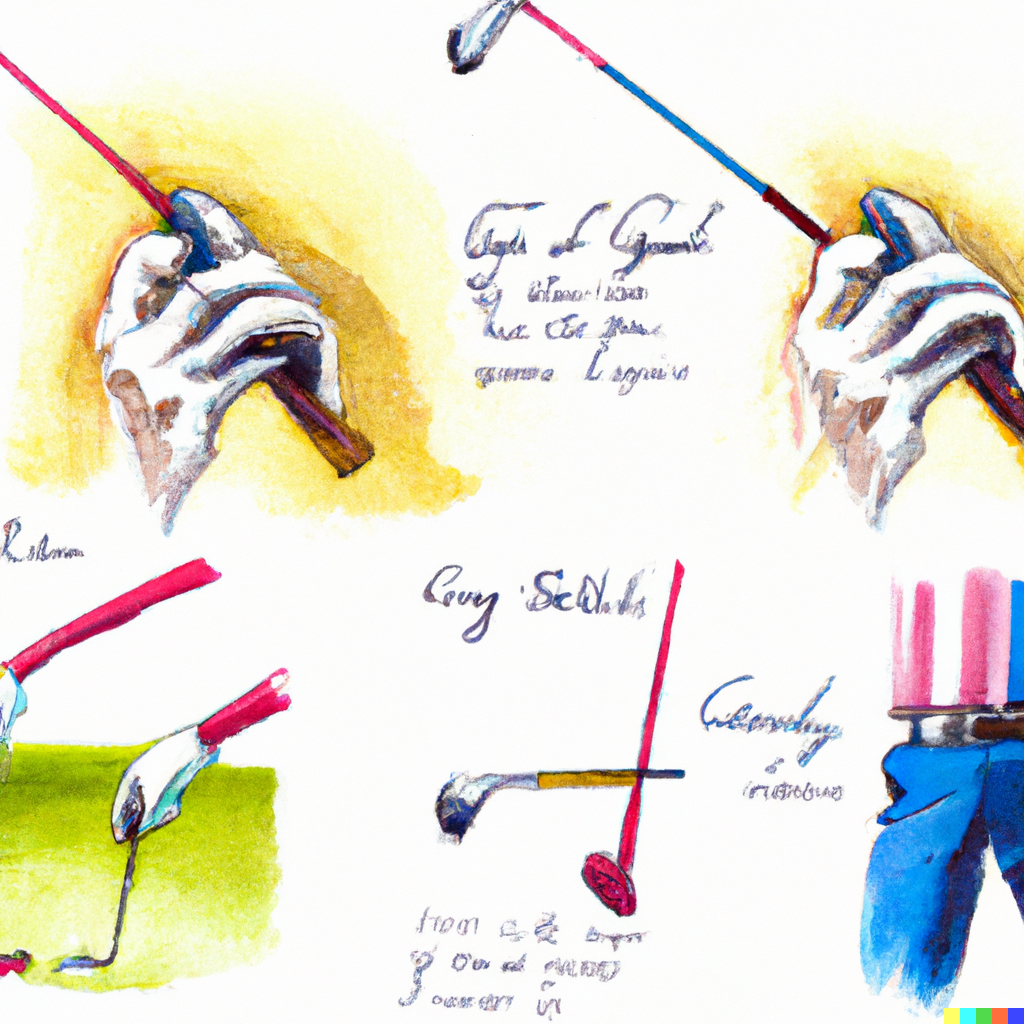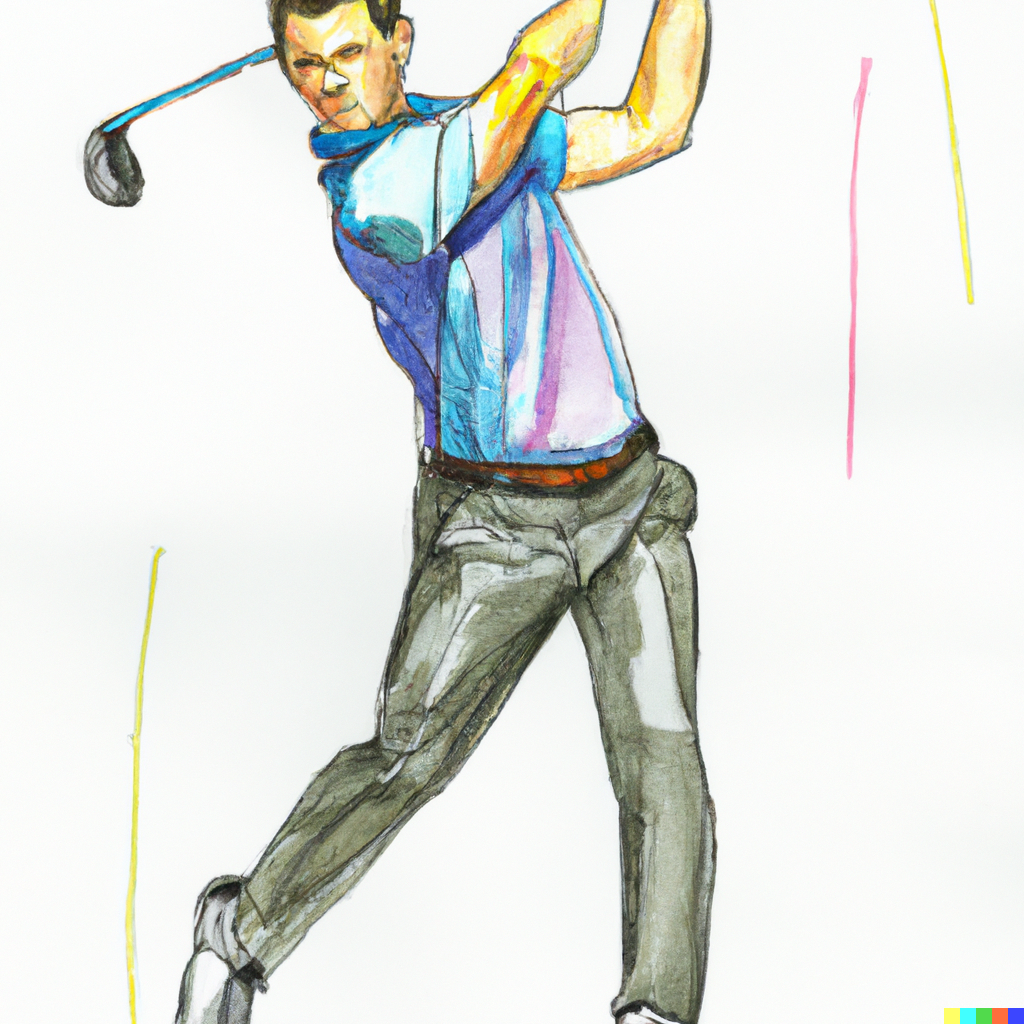- Home
- Golf Swing
- How to Fix Out to in Golf Swing
How to Fix Out to In Golf Swing: Transform Your Game Today
Are you tired of slicing the ball and losing distance? I've been there, and I know how frustrating it can be. In this guide, I'll share my personal journey of fixing my out to in golf swing and reveal the techniques that helped me add yards to my drives and improve my accuracy. We'll cover everything from setup to follow-through, with practical drills and tips you can start using today. Plus, don't miss our knowledge quiz, key takeaways, and FAQ section at the end to reinforce what you've learned. Let's get your swing back on track!
If you're like me, you've probably struggled with an out to in golf swing. It's a common issue that plagues many weekend golfers, causing frustrating slices, loss of distance, and inconsistent ball striking. I remember the days when I couldn't seem to hit a straight shot to save my life, watching helplessly as my ball sailed into the trees time and time again.
The out to in swing path is more than just an annoyance – it's a game-killer. It robs you of distance, accuracy, and most importantly, enjoyment on the course. You've probably tried quick fixes and band-aid solutions, but nothing seems to stick. Maybe you've even considered giving up golf altogether. I know I did.
But here's the good news: fixing an out to in golf swing is absolutely possible. I've been through the struggle, and I've come out the other side with a reliable, powerful swing that I'm proud of. In this article, I'm going to share the exact steps I took to transform my swing from a slice-producing nightmare to a consistent, distance-generating machine.
We'll cover everything from understanding the root causes of an out to in swing to practical drills and techniques you can use to groove a better swing path. Whether you're a high handicapper looking to break 100 or a mid-handicapper aiming to take your game to the next level, this guide will give you the tools you need to fix your out to in swing once and for all.
Mastering the In to Out Path: A Weekend Warrior's Tale
Picture this: It's a crisp Saturday morning, and I'm standing on the first tee, my buddies watching expectantly. I've got a brand new driver in my hands – the latest technology promising to cure my slice once and for all. I take a deep breath, swing with all my might, and... SLICE! The ball sails deep into the woods, my friends try to stifle their laughter, and I'm left wondering if I'll ever figure this game out.
That day was my rock bottom, but it was also the day everything changed. As we searched for my ball in the thick rough, I ran into an older gentleman who'd been watching our group. "Son," he said, "I've been playing this game for 50 years, and I can tell you right now – it's not the club, it's the swing." He proceeded to give me a 5-minute lesson right there in the woods, explaining the concept of an in to out swing path and how it could cure my slice.
Intrigued, I spent the next few months obsessively working on my swing. I practiced in my backyard, hitting into a net. I watched countless YouTube videos. I even took a few lessons from a pro. Slowly but surely, I started to feel a change. My divots began pointing to the right instead of left. My ball flight straightened out. And then, one magical day, I hit a draw for the first time in my life.
The moral of the story? The path to better golf isn't about buying the latest equipment or following quick-fix tips. It's about understanding the fundamentals, putting in the work, and trusting the process.
And here's what that means for YOU:
You can keep chasing the latest and greatest golf tech, hoping it'll magically fix your slice. But I'm here to tell you that the real secret to straighter, longer drives is learning to swing from the inside out. It's not always easy, and it takes time, but the feeling of pure, powerful contact is worth every minute of practice. Plus, once you've got it, you'll be the one giving advice in the woods instead of searching for lost balls. So, are you ready to leave that slice behind and start bombing drives down the middle of the fairway?
"The secret of getting ahead is getting started." - Mark Twain
Understanding the Out to In Golf Swing
Let's start by breaking down what exactly an out to in golf swing is and why it's causing you so much trouble on the course. Trust me, I've been there, and understanding the problem is the first step to fixing it.
An out to in swing path occurs when the clubhead approaches the ball from outside the target line and cuts across it to the inside at impact. This path often results in that dreaded slice we all hate, robbing you of distance and accuracy.
Common causes of an out to in swing:
1. Poor setup alignment
2. Over-the-top move in the downswing
3. Early extension (standing up during the swing)
4. Weak grip
5. Improper weight shift
The effects of an out to in swing can be devastating to your game:
- Chronic slicing
- Loss of distance
- Inconsistent ball striking
- Difficulty controlling ball flight
I remember the frustration of watching my ball sail into the trees hole after hole. It wasn't until I understood what was causing my out to in swing that I could start to make real improvements.
Assessing Your Swing
Before we dive into fixes, it's crucial to assess your current swing. Here's how I learned to diagnose my own swing issues:
1. Video analysis: Set up your smartphone and record your swing from face-on and down-the-line angles. Look for these telltale signs of an out to in swing:
- Club moving outside the target line in the downswing
- Steep angle of attack
- Open clubface at impact
2. Divot pattern: Check your divots on the range. An out to in swing typically produces divots pointing left of the target (for right-handed golfers).
3. Ball flight: A persistent slice or pull-slice is often indicative of an out to in swing path.
 Side-by-side comparison of incorrect and correct golf swing paths.
Side-by-side comparison of incorrect and correct golf swing paths.Fixing Your Setup
Believe it or not, many out to in swing issues start before you even begin your backswing. Here's how to set yourself up for success:
1. Alignment: Ensure your feet, hips, and shoulders are parallel to your target line. I used to unknowingly align my body to the right, forcing an out to in swing to compensate.
2. Ball position: For most shots, position the ball slightly forward of center in your stance. This promotes a shallower angle of attack.
3. Grip: Strengthen your grip slightly by rotating both hands to the right on the club (for right-handed golfers). This helps square the clubface at impact.
Correcting Your Backswing
A proper backswing sets the stage for an in to out swing path. Focus on these key elements:
1. Maintain width: Keep your arms extended in the takeaway. I used to snatch the club back, causing me to lose width and come over the top.
2. Shoulder turn: Rotate your shoulders fully, aiming to get your left shoulder (for right-handed golfers) under your chin at the top of the backswing.
3. Avoid lifting: Focus on turning rather than lifting your arms. This helps maintain your swing plane.
Improving Your Downswing
The downswing is where the magic happens. Here's how to drop the club into the slot for an in to out path:
1. Start from the ground up: Initiate your downswing with your lower body. This was a game-changer for me – it helped me avoid the dreaded over-the-top move.
2. Feel the drop: As you start down, feel like your hands are dropping straight down. This helps shallow out your swing plane.
3. Maintain your spine angle: Avoid early extension by keeping your spine angle consistent through impact.
Drills to Fix Out to In Swing
Here are three drills that helped me groove an in to out swing path:
1. Alignment Stick Drill:
- Place an alignment stick on the ground pointing at your target.
- Place another stick parallel to the first, but angled to point slightly right of the target.
- Practice swinging along the path of the angled stick.
2. Towel Drill:
- Place a towel or headcover about a foot behind your ball, just outside the target line.
- Practice swinging without hitting the towel. This forces an in to out path.
3. Half Swing Drill:
- Make half swings focusing on dropping the club into the slot.
- Gradually increase to full swings as you get comfortable with the feeling.
 Overhead view of correct vs. incorrect golf swing paths with alignment guide.
Overhead view of correct vs. incorrect golf swing paths with alignment guide.Mental Approach to Swing Change
Changing your swing takes time and patience. Here's how I stayed motivated during the process:
1. Set realistic expectations: Understand that change doesn't happen overnight. Celebrate small victories along the way.
2. Use visualization: Before each shot, visualize the correct swing path. This mental rehearsal can be powerful in grooving new movements.
3. Stay present on the course: When playing, focus on one swing thought rather than trying to fix everything at once.
Equipment Considerations
While equipment isn't a magic fix, it can support your swing changes:
1. Get fitted: A proper club fitting can ensure your equipment complements your new swing path.
2. Consider shaft flex: A more flexible shaft can help you square the clubface more easily.
3. Explore draw-biased clubs: Some drivers and fairway woods are designed to help promote an in to out path.
Maintaining Your New Swing
Once you've grooved your new in to out swing path, it's important to maintain it:
1. Regular practice: Set aside time each week to reinforce your new swing pattern.
2. Periodic check-ups: Use video analysis or seek professional feedback to ensure you're staying on track.
3. Be vigilant: Watch for signs of your old out to in tendencies creeping back in, especially under pressure.
Remember, fixing an out to in golf swing is a journey, not a destination. Stay patient, trust the process, and enjoy the improvement in your game. Before you know it, you'll be striping shots down the middle and leaving your playing partners in awe!
Key Takeaways: Your Blueprint for Fixing Your Out to In Golf Swing
Alright, fellow weekend warriors, let's recap the game-changing insights we've covered about fixing that pesky out to in golf swing. Here are the core actionable takeaways you can start using immediately to transform your swing and start bombing drives down the fairway:
1. Master Your Setup
• It creates a solid foundation for an in to out swing path so you can promote straighter shots
• It helps you align your body correctly which means fewer compensations in your swing
2. Focus on a Full Shoulder Turn
• It promotes a wider arc in your backswing so you can generate more power
• It helps you avoid the dreaded over-the-top move which means fewer slices
3. Initiate the Downswing with Your Lower Body
• It helps you drop the club into the slot so you can achieve an in to out path
• It promotes better sequencing which means more consistent ball striking
4. Use the Alignment Stick Drill
• It provides a visual guide for the correct swing path so you can groove the right feeling
• It gives instant feedback on your swing which means faster improvement
5. Strengthen Your Grip Slightly
• It helps you square the clubface at impact so you can reduce your slice
• It promotes a more in to out swing path which means straighter, longer drives
Remember, fixing your out to in swing is a journey, not a destination. Be patient with yourself and celebrate the small victories along the way. With consistent practice and focus on these key points, you'll be amazed at how quickly your swing - and your scores - can improve.
Now, here's the million-dollar question: Are you ready to leave that slice behind and start hitting draws that make your playing partners' jaws drop? Because let me tell you, there's nothing quite like the feeling of watching your ball sail long and straight down the fairway, knowing you've conquered one of golf's most common swing flaws.
But here's the thing - reading about these techniques is just the first step. The real magic happens when you take action. So why not start right now? Head to the range, try out one of these tips, and see the difference for yourself. Or better yet, set up that alignment stick drill in your backyard and start grooving that in to out path today.
Remember, every tour pro was once an amateur who decided to take their game seriously. Who knows? Maybe a year from now, you'll be the one giving out swing tips at the 19th hole. The power to transform your golf game is in your hands.
Are you going to grab it?
Comprehensive FAQ: Everything You Need to Know About Fixing Your Out to In Golf Swing
What causes an out to in golf swing?
What causes an out to in golf swing?
An out to in golf swing is typically caused by a combination of factors, including poor setup alignment, an over-the-top move in the downswing, early extension, a weak grip, and improper weight shift. The most common culprit is the over-the-top move, where the upper body initiates the downswing, causing the club to move outside the ideal swing path.
How do I know if I have an out to in golf swing?
How do I know if I have an out to in golf swing?
You can identify an out to in swing by looking for these signs: persistent slicing or pull-slicing of the ball, divots that point left of the target (for right-handed golfers), and a steep angle of attack. Video analysis can also help you spot if your clubhead is moving from outside to inside through impact.
What is the difference between in to out and out to in golf swing?
What is the difference between in to out and out to in golf swing?
An in to out golf swing is when the club approaches the ball from inside the target line and moves outward through impact, promoting a draw or straight shot. An out to in swing does the opposite, approaching from outside the target line and moving inward, often causing a slice.
How do I fix my over the top golf swing?
How do I fix my over the top golf swing?
You're probably thinking you need to make a massive change to your swing, right? Well, actually, small adjustments can make a big difference. Focus on initiating your downswing with your lower body, feeling like your hands are dropping straight down as you start your downswing. Practice the towel drill, placing a towel or headcover outside your ball, and swing without hitting it to groove an inside path.
What are some effective drills to fix an out to in swing?
What are some effective drills to fix an out to in swing?
There are several effective drills to help correct an out to in swing:
1. Alignment Stick Drill: Set up sticks to guide an in to out path.
2. Towel Drill: Place a towel outside your ball to avoid an out to in path.
3. Half Swing Drill: Make half swings focusing on dropping the club into the slot.
4. Gate Drill: Set up alignment sticks creating a "gate" to swing through.
How long does it typically take to fix an out to in swing?
How long does it typically take to fix an out to in swing?
You're probably thinking it'll take months of practice to see any improvement, right? Well, while everyone's journey is different, many golfers start seeing improvements in their ball flight within a few weeks of dedicated practice. I remember when I was working on my swing, I started noticing positive changes after just a couple of range sessions focusing on the right drills.
Can changing my grip help fix an out to in swing?
Can changing my grip help fix an out to in swing?
Yes, adjusting your grip can help. A slightly stronger grip (rotating both hands to the right on the club for right-handed golfers) can help you square the clubface more easily at impact, reducing the tendency to slice. However, be careful not to overdo it, as an excessively strong grip can lead to other issues.
How does ball position affect my swing path?
How does ball position affect my swing path?
Ball position plays a crucial role in your swing path. Playing the ball too far forward can promote an out to in swing as you try to reach it. For most shots, position the ball slightly forward of center in your stance. This promotes a shallower angle of attack and makes it easier to approach the ball from the inside.
You're probably thinking ball position isn't that important, right?
You're probably thinking ball position isn't that important, right?
Well, I used to think the same until I realized how much it was contributing to my slice. Moving the ball back just an inch made a world of difference in my ability to approach from the inside.
What role does the backswing play in creating an in to out path?
What role does the backswing play in creating an in to out path?
A proper backswing sets you up for success in creating an in to out path. Focus on maintaining width in your takeaway, making a full shoulder turn, and avoiding lifting your arms. This puts you in a better position at the top, making it easier to drop the club into the slot on the downswing.
How can I maintain my spine angle to prevent an out to in swing?
How can I maintain my spine angle to prevent an out to in swing?
Maintaining your spine angle is crucial for preventing an out to in swing. Practice keeping your upper body tilted over the ball throughout your swing. A good drill is to set up with your back against a wall and maintain contact as you make your swing. This helps you feel the correct spine tilt and avoid standing up (early extension) during the downswing.
Can equipment changes help fix an out to in swing?
Can equipment changes help fix an out to in swing?
While equipment isn't a magic fix, certain changes can support your swing improvements. Consider getting fitted for clubs with the right shaft flex for your swing speed. Some drivers and fairway woods are designed with draw bias, which can help promote an in to out path. However, focus on technique first, then fine-tune with equipment.
You're probably thinking you need to buy a new set of clubs to fix your swing, right?
You're probably thinking you need to buy a new set of clubs to fix your swing, right?
Well, I thought the same thing once. I spent a small fortune on new clubs, only to realize that my swing was the real issue. Trust me, work on your technique first, then consider equipment tweaks.
How does weight transfer affect my swing path?
How does weight transfer affect my swing path?
Proper weight transfer is essential for creating an in to out swing path. Start with your weight evenly distributed or slightly favoring your back foot. As you start your downswing, shift your weight towards your front foot. This helps you approach the ball from the inside and promotes better contact.
What mental tips can help me groove an in to out swing path?
What mental tips can help me groove an in to out swing path?
Mental tips can be crucial in grooving an in to out swing path. Visualize your desired ball flight before each shot. Use a simple swing thought like "inside to out" or "drop into the slot" to reinforce the correct movement. Practice patience and persistence, understanding that changing your swing takes time. Celebrate small victories to stay motivated throughout the process.
How can I prevent reverting to my old out to in swing under pressure?
How can I prevent reverting to my old out to in swing under pressure?
You're probably thinking it's impossible to maintain your new swing when the pressure's on, right? Well, I used to struggle with this too. The key is to ingrain your new swing through consistent practice and then trust it on the course. Develop a pre-shot routine that includes a practice swing focusing on the correct path. When you feel pressure, slow down and focus on one key swing thought. Remember, your new swing is more reliable than your old one, even if it doesn't feel that way yet.
Can fixing my out to in swing help with other aspects of my game?
Can fixing my out to in swing help with other aspects of my game?
Absolutely! Fixing your out to in swing can have a ripple effect on your entire game. You'll likely see improvements in your driving distance and accuracy, which can lead to better approach shots. The increased consistency can boost your confidence, positively impacting your short game and putting. I found that once I fixed my swing path, my overall enjoyment of the game increased dramatically.
How do I know if I'm making progress in fixing my out to in swing?
How do I know if I'm making progress in fixing my out to in swing?
Look for these signs of progress:
1. Your ball flight is straighter or has a slight draw instead of a slice
2. Your divots are pointing straight or slightly right of your target (for right-handed golfers)
3. You're hitting the sweet spot more consistently
4. Your distance and accuracy are improving
5. You feel more in control of your swing
Keep track of these metrics to stay motivated during your swing change journey.
What should I focus on if I only have limited time to practice?
What should I focus on if I only have limited time to practice?
If you're short on practice time, focus on these key areas:
1. Setup and alignment: Groove a proper setup using alignment sticks
2. Half swing drill: Work on dropping the club into the slot
3. Slow-motion full swings: Focus on feeling the correct path without worrying about ball flight
Even 15 minutes of focused practice on these elements can yield significant improvements over time.
How can I use video analysis effectively to fix my out to in swing?
How can I use video analysis effectively to fix my out to in swing?
Video analysis can be a powerful tool. Set up your smartphone to record your swing from face-on and down-the-line angles. Look for these key points:
1. Is your clubhead moving outside the target line in the downswing?
2. Are you maintaining your spine angle?
3. Is your downswing initiated by your lower body?
4. Is your club approaching the ball from the inside?
Compare your swing to pro swings or your own improved swings to identify areas for improvement.
Can working on my flexibility help fix an out to in swing?
Can working on my flexibility help fix an out to in swing?
Yes, improving your flexibility, especially in your hips and thoracic spine, can make it easier to achieve the proper positions in your swing. Increased flexibility can help you make a fuller turn in your backswing and improve your ability to rotate through the shot, promoting an in to out path.
How does clubhead speed relate to fixing an out to in swing?
How does clubhead speed relate to fixing an out to in swing?
You're probably thinking you need to swing faster to hit better shots, right? Well, interestingly, focusing on clubhead speed can sometimes exacerbate an out to in swing as you might sacrifice technique for speed. Instead, focus on improving your swing path first. As your technique improves, you'll likely see an increase in clubhead speed naturally. Remember, efficient technique is more important than raw speed.
What's the role of the follow-through in correcting an out to in swing?
What's the role of the follow-through in correcting an out to in swing?
While the ball is long gone by the time you reach your follow-through, it can provide valuable feedback on your swing path. A proper follow-through for an in to out swing should feel like your arms are extending towards the target, with your body fully rotated. If you find your arms crossing over your body in the follow-through, it might indicate you're still swinging out to in.






















